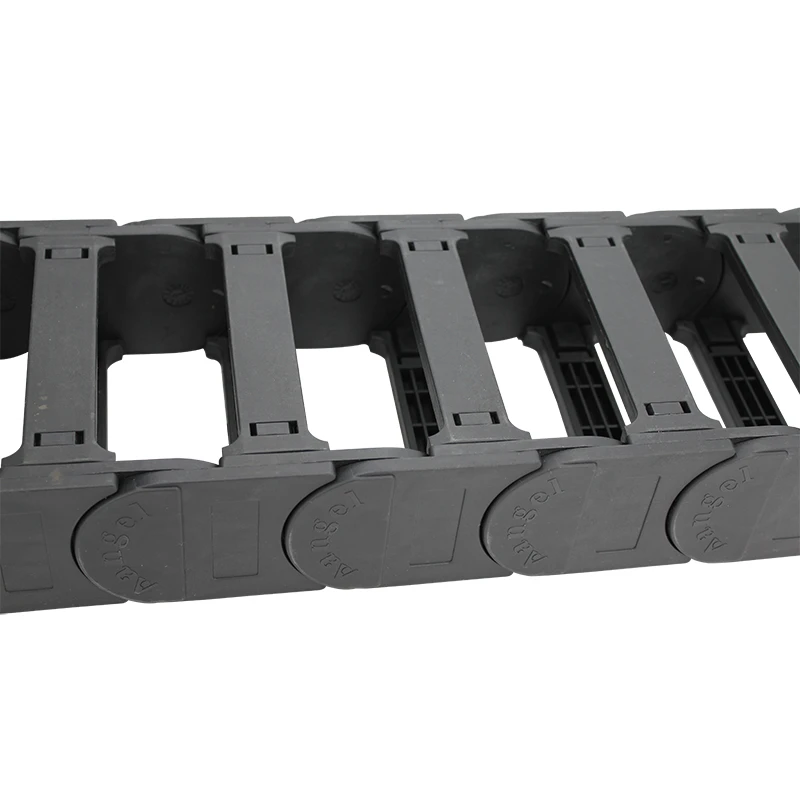miniature cable carrier
The Importance of Miniature Cable Carriers in Modern Industries
In the ever-evolving landscape of modern industries, efficiency and precision are paramount. One component that has quietly yet significantly impacted these requirements is the miniature cable carrier. Often overlooked, these compact devices play a crucial role in organizing and protecting cables and hoses in various automated systems, ensuring smooth operation and longevity of equipment. This article delves into the significance, applications, and benefits of miniature cable carriers across different sectors.
What is a Miniature Cable Carrier?
Miniature cable carriers, also known as energy chains or drag chains, are specialized systems designed to guide and protect moving cables, hoses, and tubing in machines and robotic systems. Their compact design makes them suitable for applications where space is limited, allowing for efficient routing of essential connections while preventing wear and damage from mechanical abrasion.
Applications Across Industries
A wide array of industries benefits from miniature cable carriers. In the manufacturing sector, these carriers are commonly used in CNC machines, robotic arms, and conveyor systems. Their lightweight and flexible design enables smooth movement along with machine components, facilitating rapid and precise operations.
In the field of automation, miniature cable carriers provide a reliable solution for managing cables in assembly lines and automated production systems
. They ensure that moving parts do not constrict or damage cables, which can lead to costly downtimes and repairs.The telecommunications industry also finds value in miniature cable carriers for managing fiber optics and electrical connections within tightly packed servers and networking equipment. As data centers continue to grow, ensuring the proper organization of cables becomes increasingly essential to maintain airflow and reduce overheating.
miniature cable carrier

Benefits of Using Miniature Cable Carriers
1. Space Efficiency The compact design of miniature cable carriers allows them to fit into tight spaces where traditional cable management solutions may be impractical. This is especially useful in robotic applications where every inch matters.
2. Protection of Cables and Hoses By enclosing and guiding cables and hoses, these carriers significantly reduce the risk of damage from external factors like friction, abrasion, and environmental exposure. This decreases the likelihood of frequent maintenance, leading to lower operational costs.
3. Flexibility and Mobility Miniature cable carriers are designed to accommodate various movements, including bending, twisting, and linear motion. This flexibility ensures that cables remain properly routed throughout the equipment's operational cycle.
4. Improved Aesthetics and Organization Using miniature cable carriers contributes to a more organized workspace by neatly bundling and managing cables. This not only enhances the visual appeal of machinery but also simplifies troubleshooting and repairs when issues arise.
5. Reduced Noise Levels In applications where machinery operates at high speeds, cable carriers can minimize any potential rattling or clanging noises produced by loose cables and hoses, contributing to a quieter working environment.
Conclusion
As industries continue to advance technologically, the importance of effective cable management solutions cannot be overstated. Miniature cable carriers, with their space-saving design and protective capabilities, offer significant advantages across various applications. From manufacturing to telecommunications, these understated components play an essential role in ensuring operational efficiency and reliability. As we look to the future, investing in advanced cable management systems like miniature cable carriers will undoubtedly contribute to the sustainability and performance of modern mechanical systems, driving innovation and progress in countless fields.








